Customer Service Instant Messaging (IM) System
Integrating customer service, advisors, and administrative roles, we built a parent-facing instant messaging system that significantly enhanced communication transparency and efficiency.
Role
Design lead
Device
Web, iOS and Android
Tools
Figma, Illustrator, Photoshop, Miro and Notion
Published
May 2024
Background
Before launching this system, we faced persistent issues in parent-advisor communication: fragmented messaging, constant switching between platforms, blurred roles between customer service and advisors, and time-consuming, error-prone manual forwarding of messages.
- Fragmented Channels: Parents and advisors regularly used 3+ different private messaging apps (LINE, WhatsApp, WeChat), making it hard to trace and document conversations
- Inefficient Work Hours: Advisors spent 100+ minutes per week manually forwarding messages—time that should have been dedicated to their core responsibilities
- Unclear Roles: Around 50% of parents bypassed customer service and messaged advisors directly, creating confusion in ownership and making handoffs during leave periods chaotic and stressful
To address these issues, we designed an integrated instant messaging (IM) system within both the parent app and our internal platform. This unified system connects parents, customer service, and advisors to solve problems of fragmented communication, unclear responsibilities, and inefficiencies.
My Role
As the lead designer, I oversaw the full design process—from research and workflow definition to information architecture and UI/UX design. I closely collaborated with PMs, engineers, and cross-functional teams, including customer service and advisors.
Framing the Real Problem
We used a design thinking approach to define problems from the ground up, analyzing the situation through Pain Points → Insight → Solution to ensure our design decisions addressed the most urgent and high-impact needs.
Stakeholder Interviews
Define the Problem Clearly
To understand operational bottlenecks, we conducted in-depth interviews with key stakeholders—customer service staff, advisors, scheduling administrators, and internal leads.
From extensive meeting notes and interview transcripts, we distilled the ambiguous "communication issues" into three key pain points that could be addressed through design:
📌 Bringing It Back to People
To ensure user-centered design, we translated interview insights into user stories that reflect the real-life needs and goals of each role:
Parent
"As a parent who cares about my child's education, I want to ask questions through an official channel and track their status, so I won’t worry about being ignored."
Customer Service
"As a service agent, I need real-time notifications for new tickets within my main work platform so I can maintain workflow and meet service standards without missing anything."
Advisor
"As an advisor, I want to clearly see only the cases assigned to me so I can stay focused on supporting my assigned parents instead of getting bogged down by administrative noise."
Manager
"As a department head, I want a dashboard that visualizes case progress so I can objectively evaluate performance, identify bottlenecks, and provide targeted training."
Therefore, we defined our MVP around the above pain points and user stories, prioritized high-impact solutions.
Solving Messaging Chaos with
Structure, Clarity, and Speed
With the core problems clarified, we focused this project on solving the following key challenges:
- Build a unified communication platform: End platform-switching chaos
- Define roles and permissions clearly: Free advisors and customer service from burdensome message handoffs
- Improve operational efficiency: Reduce repetitive work through systemization and enable trackable KPIs
- Deliver and validate quickly: Research SendBird integration and launching a functional MVP within three months, ensuring the solution could be tested and iterated rapidly
From Chaos to Clarity:
Case-Based Communication as the Core Framework
We adopted a case-based design strategy—each parent query is treated as a distinct, traceable case—establishing a collaborative, trackable, and accountable communication structure.
Compared to traditional chat-based messaging, the case-oriented model offers several advantages:
- Centralized Information with History Logs: All interactions, assignees, and statuses are tied to each case
- Clear Role Assignments: Cases are auto- or manually assigned, ensuring continuity and accountability
- Manageable and Measurable: Case statuses and histories help managers track progress and evaluate performance
🎯 Challenge 1: Scattered Messaging Makes Tracking Difficult
Problem
- Parents use multiple apps (LINE, WeChat, WhatsApp), making messages hard to consolidate
- No tagging or conversation logs—customer service agents can’t track history or progress
- Private messaging tools lack corporate oversight and compliance features
Solution
- Embed "Ask a Question" and chat features into the parent app

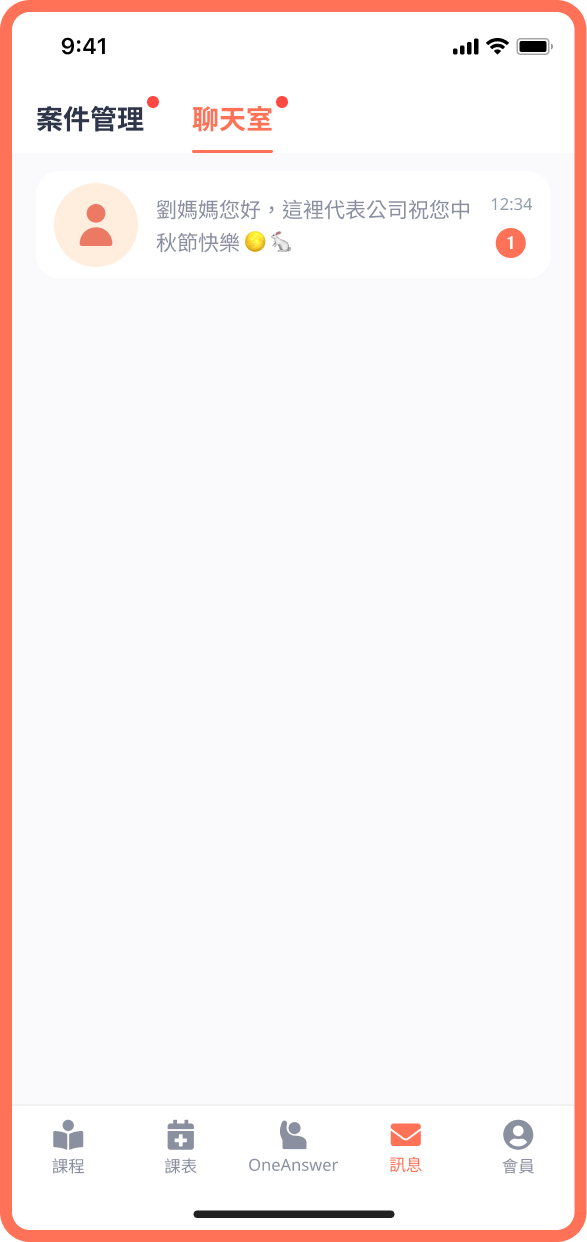
🎯 Challenge 2: No Assignment System → Ambiguous Ownership
Problem
- No assignment flow; cases need manual handover during advisor leave
- Lack of ownership visibility—makes follow-up unclear
- High service disruption risk during holidays
Solution
- Add dashboard page and assignment features in the internal MMS system, including claim, assign, and case history pages

🎯 Challenge 3: High Repetition, Low Efficiency
Problem
- Common questions require repetitive responses, wasting time
- Inconsistent reply quality across agents
Solution
- Add canned responses in the case reply interface, centrally managed in the admin panel
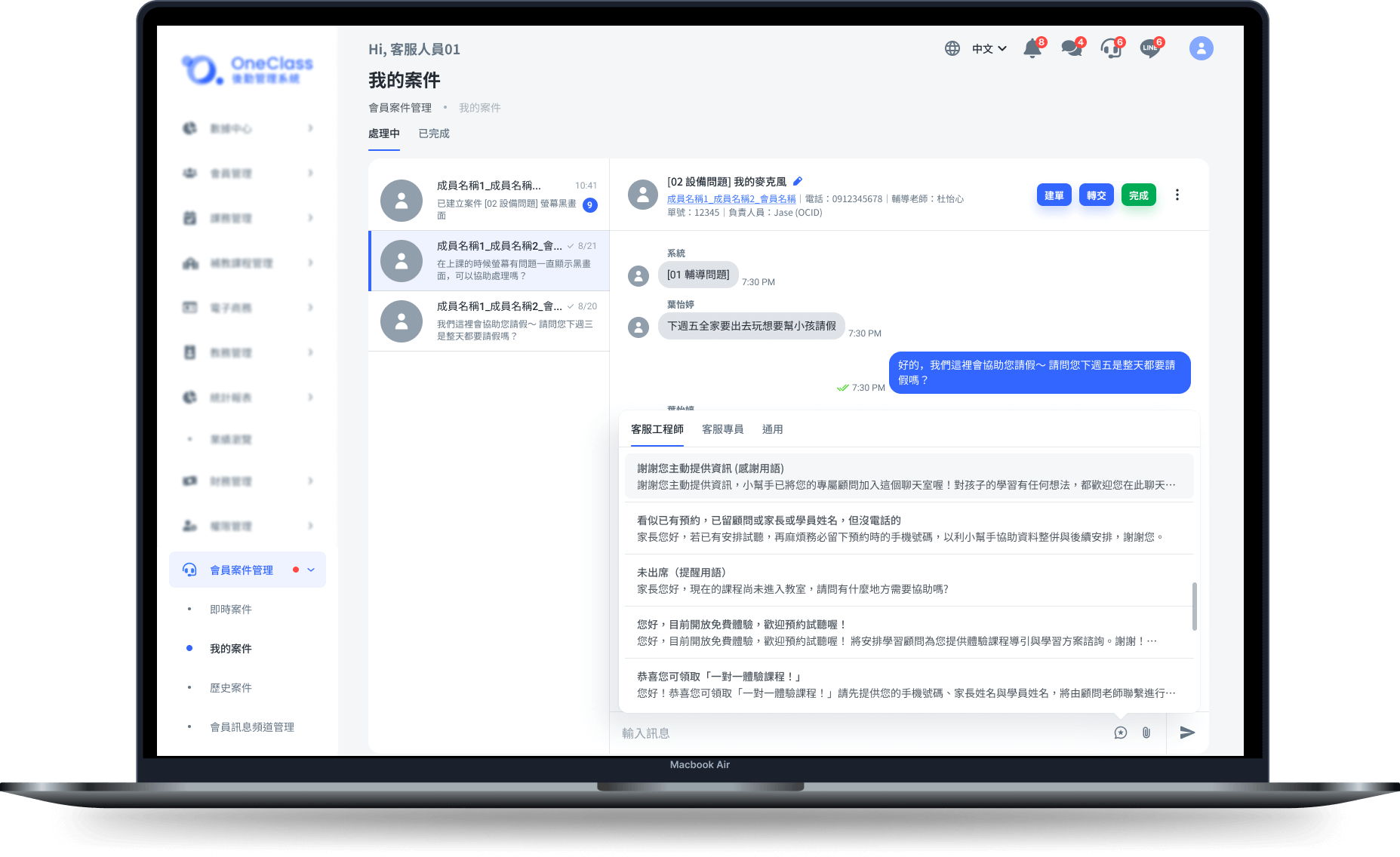
🎯 Challenge 4: Search and Case Tracking Pain for Advisors
Problem
- Advisors spend over 100 minutes/week forwarding messages or confirming case status
- No personalized task dashboard or filtering options
Solution
- Build "My Tasks" page so advisors can easily view cases assigned to them. → Enables focus on relevant work while reducing context-switching and message forwarding
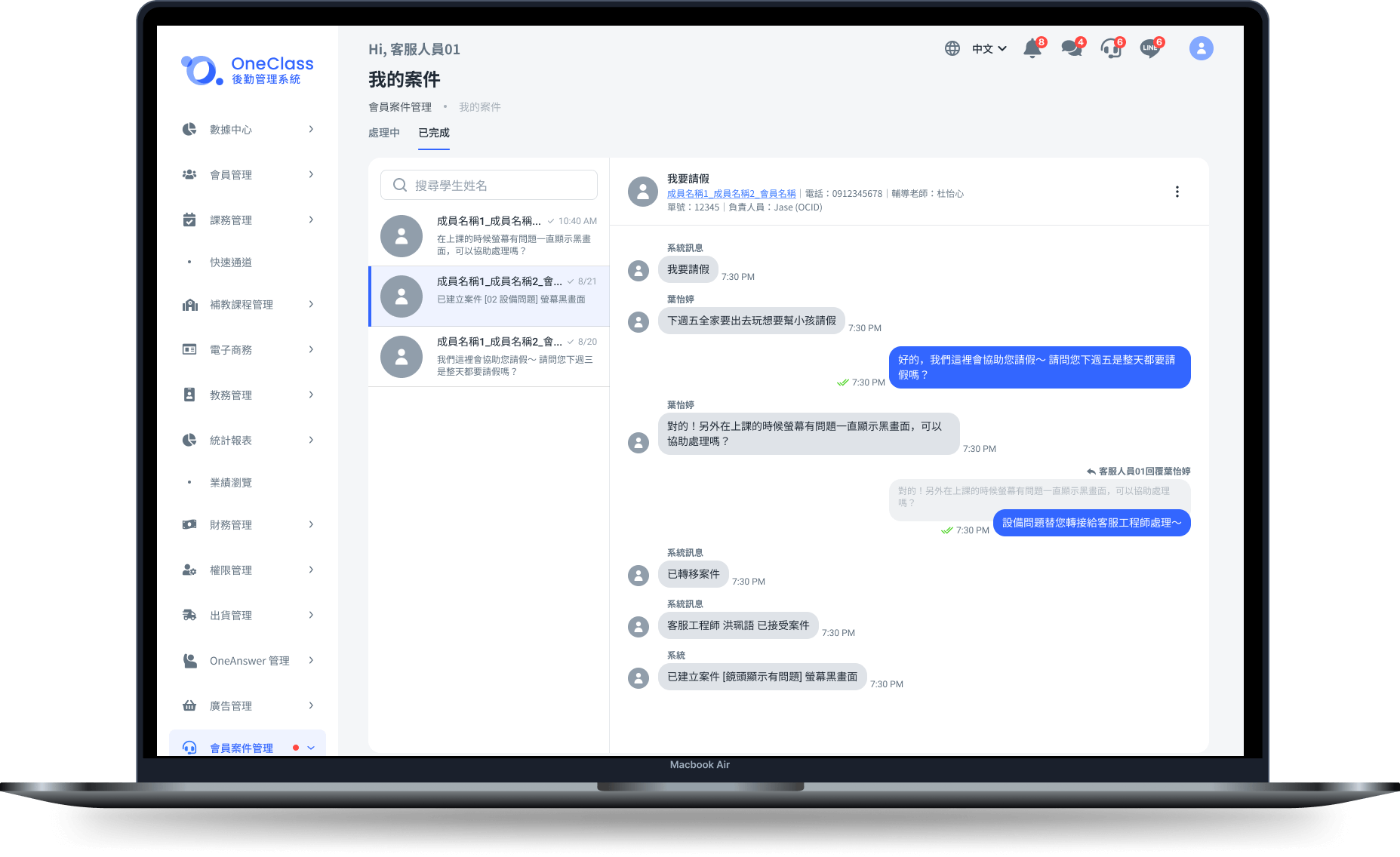
For Parents: Simple & Transparent
Parents can easily initiate support by tapping the “Ask a Question” button in the app, opening a chat thread tied to a specific case. This allows for instant communication while enabling real-time status tracking and access to message history at any time.
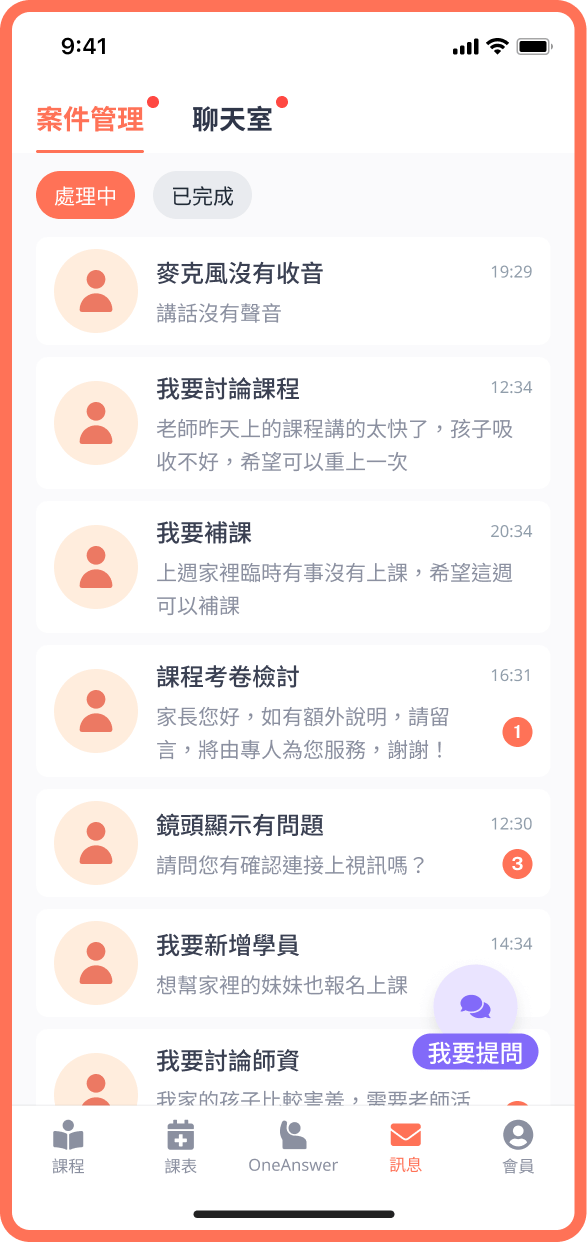
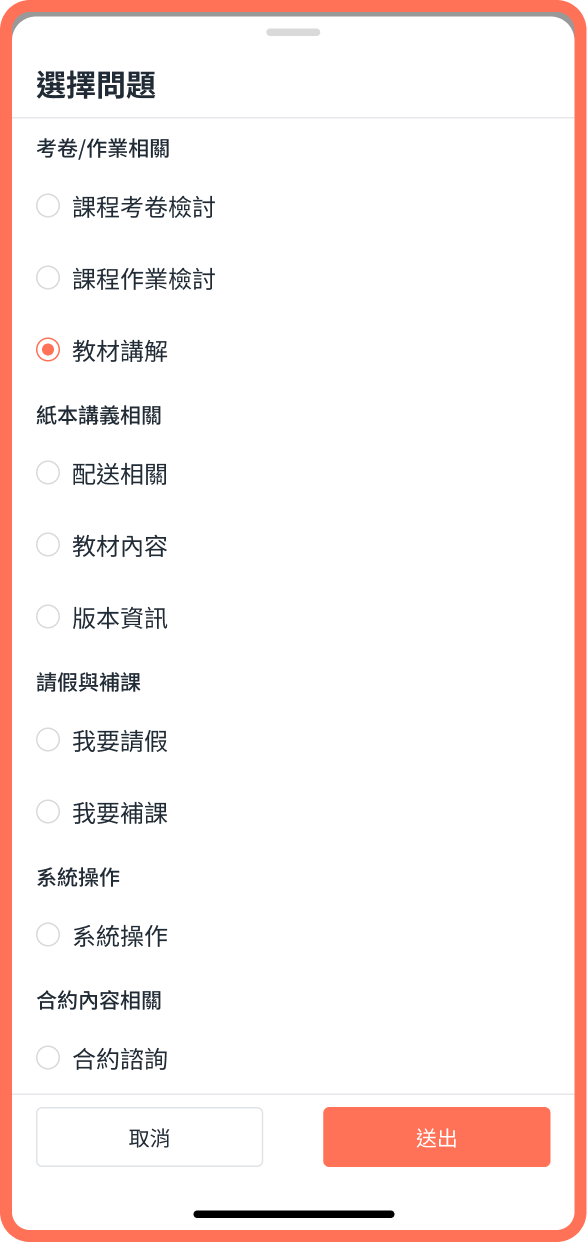
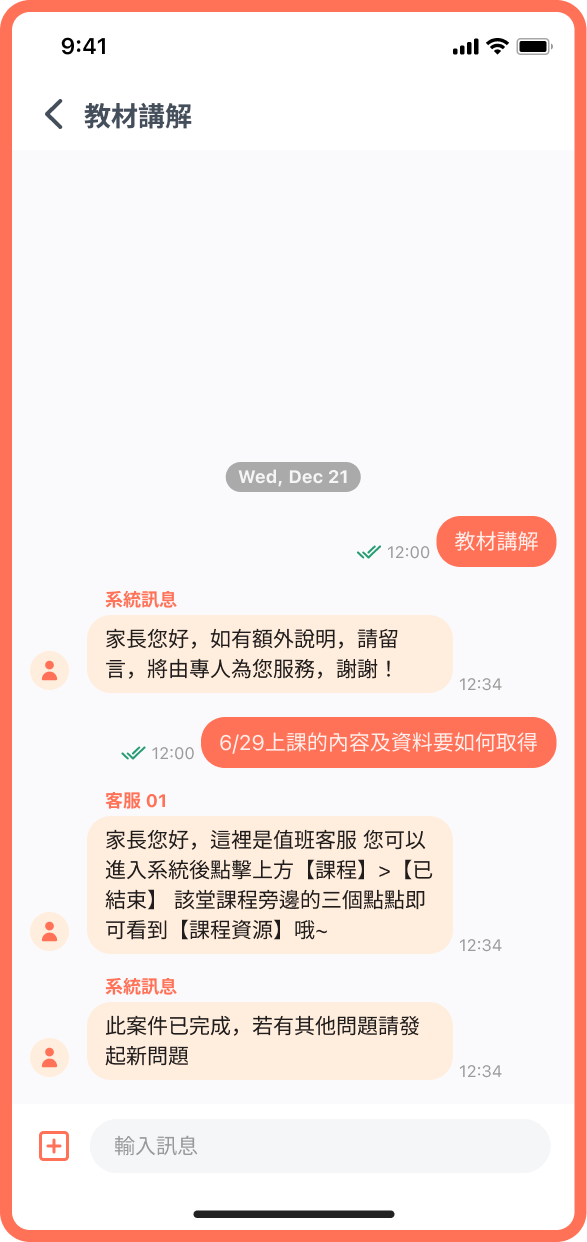
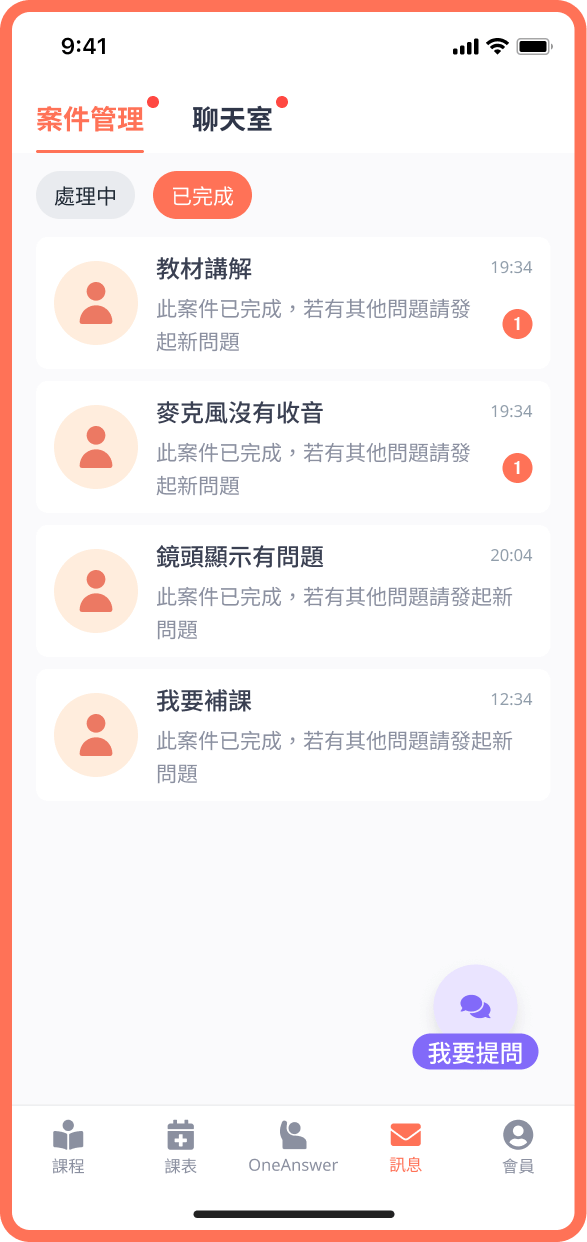
For Internal Teams: Clear Tasks, Faster Workflows
The system sends real-time notifications for new tasks, combined with case assignment logic and a “My Tasks” dashboard, allowing each team member to quickly grasp their responsibilities. The end-to-end workflow supports comprehensive case records, enabling efficient KPI management and case tracking.
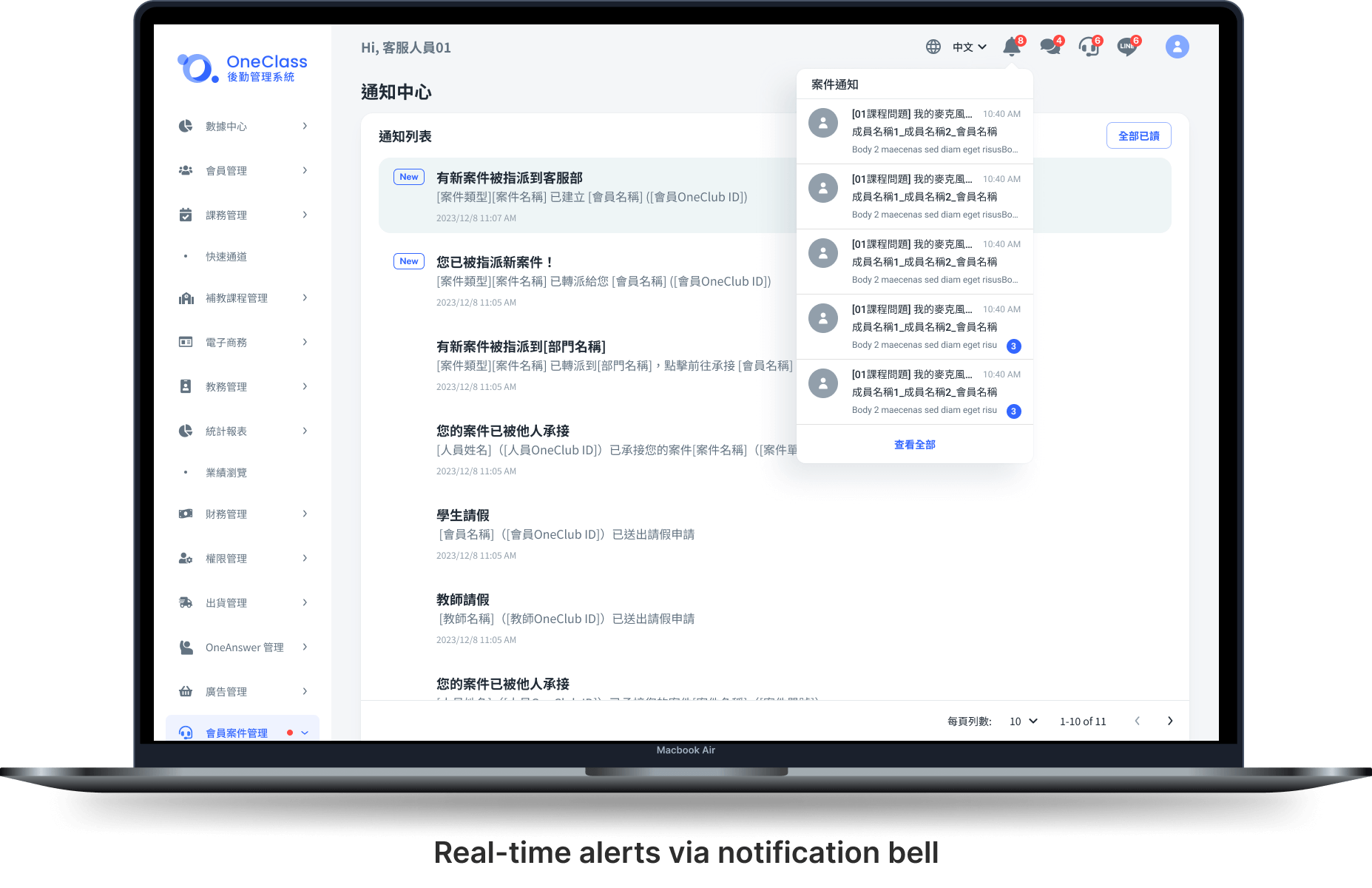

Turning Design Into Business Value
- Advisor Workload Reduced: By systemizing message handoffs, each advisor saved up to 100 minutes per week on repetitive communication tasks. This translated to a total of 3,000 minutes saved weekly across the team, allowing advisors to focus more on teaching and student care
- Data-Driven Decisions: For the first time, managers gained access to clean, structured case data. They could instantly track case types, resolution times, and team workload—enabling smarter service optimization
- Improved Team Collaboration: Clearer roles, smarter workflows, and visible accountability significantly reduced friction caused by information gaps, boosting overall team satisfaction and operational harmony
- Fast MVP Launch: We delivered a functional MVP within three months by integrating SendBird, enabling rapid testing, iteration, and validation of the core solution in a real environment



